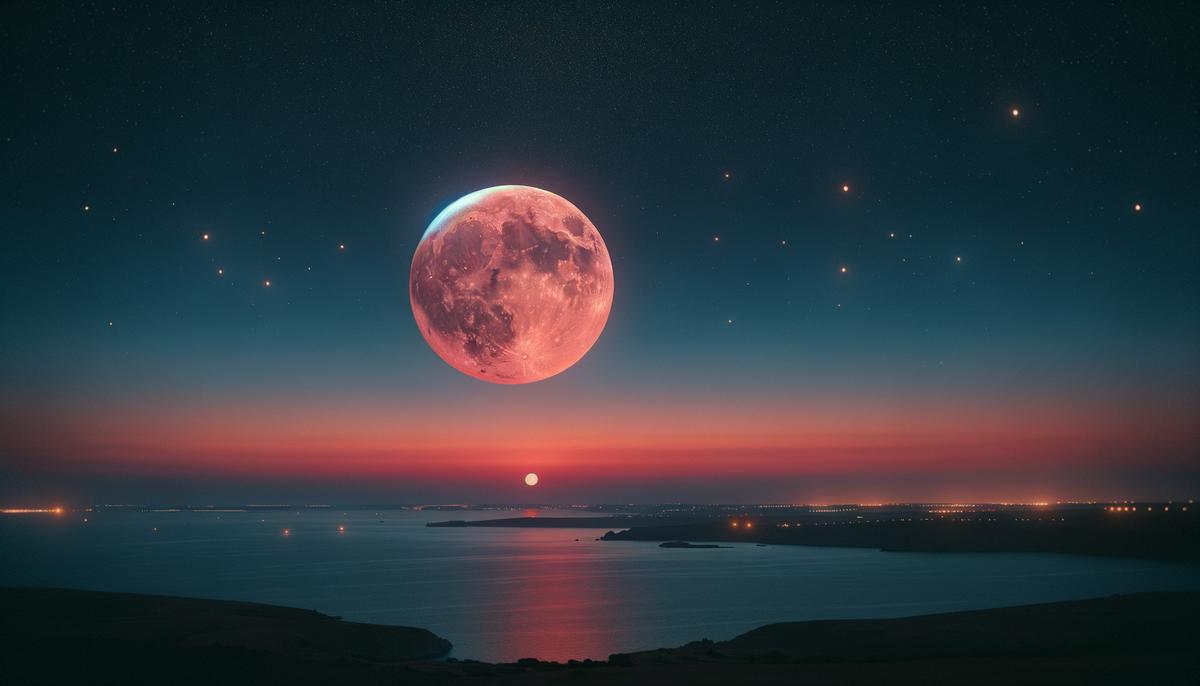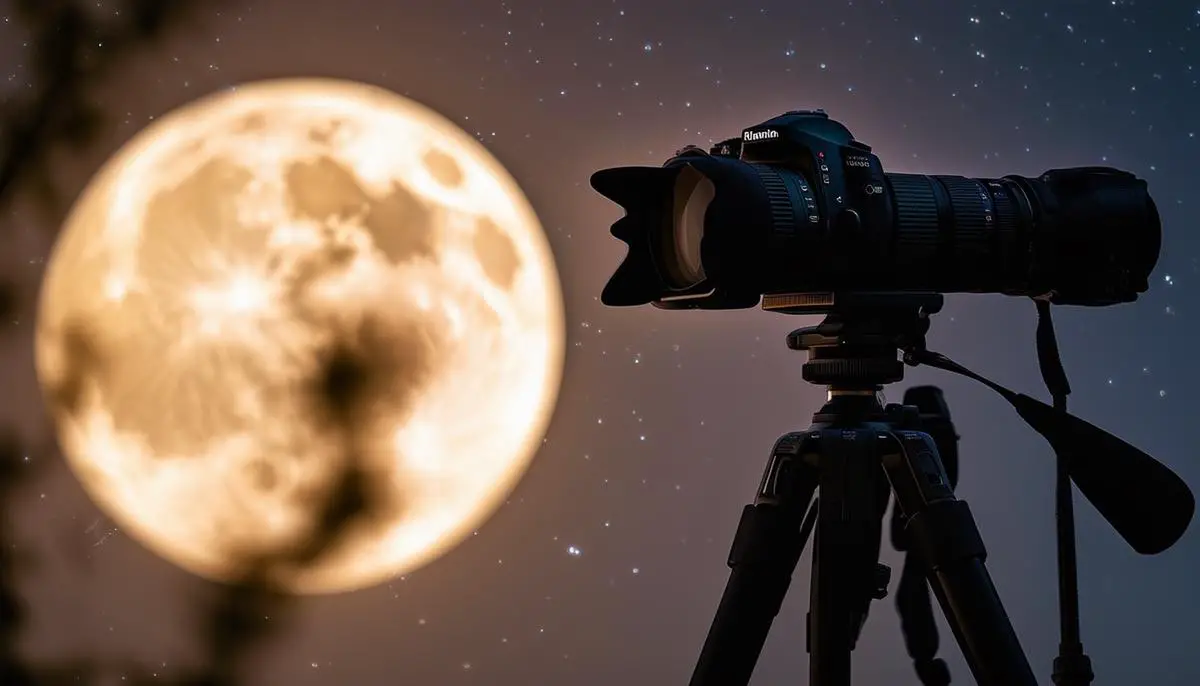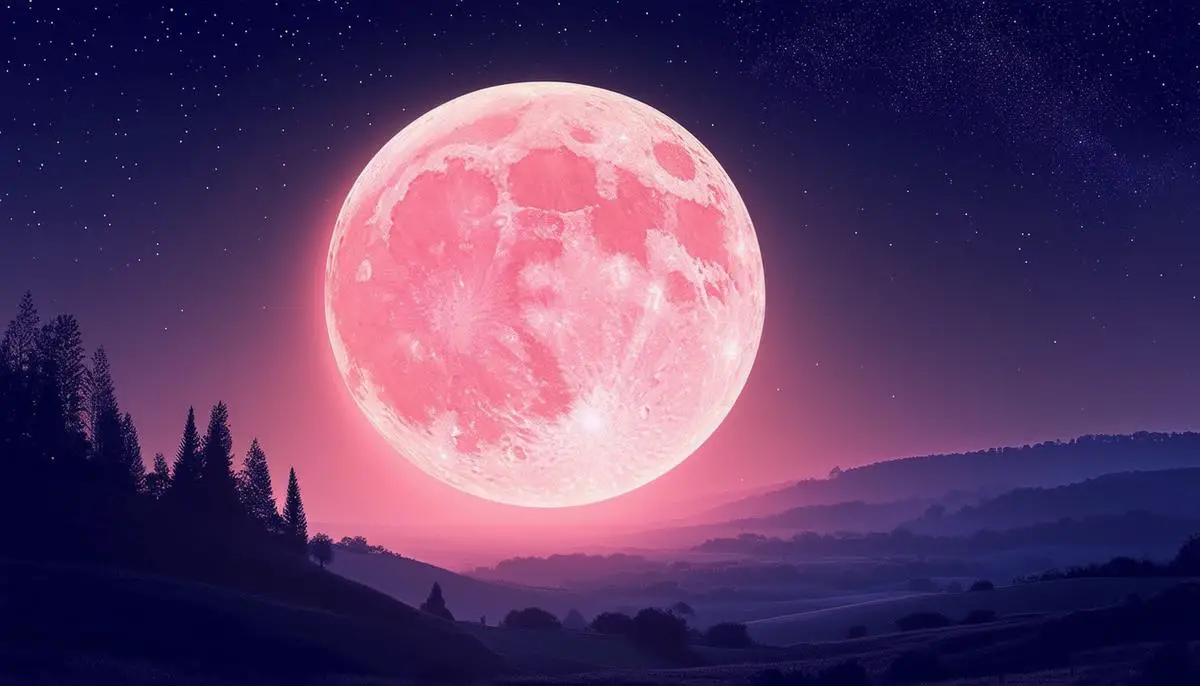Skywatchers, brace yourselves for the June Strawberry Moon of 2023. Named after the strawberry harvest season, this moon will grace the skylines on Saturday, June 3, 2023, at exactly 11:41 p.m. EDT, according to the U.S. Naval Observatory. Observers in New York City can expect the moon to rise at 8:21 p.m., hanging gloriously until it sets at 5:24 a.m. the next morning.
Originally named by Native American tribes like the Algonquin, who used the full moon as a cue to gather ripening strawberries, this moon is also referred to as the Rose Moon or the Hot Moon, signaling the advent of summer heat. In Cree culture, it is known as the Egg Laying Moon, marking the time when birds and waterfowl start laying eggs.
The June full moon isn't an ordinary lunar event this year. It's also:
- The last full moon of spring
- A harbinger of a summer filled with exciting lunar phenomena like four consecutive supermoons, including:
- The Buck Moon on July 3
- The Harvest Moon on September 29
A full moon occurs when the moon is exactly on the opposite side of Earth from the sun, fully reflecting sunlight. This moon will appear slightly brighter and bigger due to its position close to Earth, also known as perigee, affecting its perceived size and brightness.
The bright Strawberry Moon can make it challenging to observe the lunar surface's intricate details through binoculars or small telescopes because of its intense glare. Using a moon filter can improve contrast and reveal details. The moon's position low in the sky will lend it a warmer hue, often appearing orange or yellow due to the thicker atmosphere between the observer and the moon.
The night sky will also feature Venus and Mars. Venus appears like a bright white speck, and Mars is distinguishable by its reddish tint slightly to the left of Venus. Observers around 9 p.m. local time can see Pollux and Castor, the heads of Gemini, near Venus. Venus will set at approximately 11:41 p.m. while Mars follows shortly after midnight.
For those with a telescope, Venus will be at its greatest eastern elongation, making it visible for an extended period in the evening and an excellent subject for moon hunters and evening stargazers. Saturn will also make an appearance, rising at 1:17 a.m. EDT, followed by Jupiter at 3:30 a.m., both providing stunning spectacles before sunrise.
Southern Hemisphere observers have an equally exciting view. With the Strawberry Moon high in the sky, skywatchers can also glimpse Saturn, Jupiter, and Mercury as the moonlight illuminates the Southern Cross and constellations forming Argo.
Historically, the Strawberry Moon signifies more than just its radiant appearance. In the traditional Chinese lunar calendar, June 3 falls on the 16th day of the fourth lunar month, known as Locust Tree Month. In New Zealand's Māori calendar, this full moon marks the onset of Hongonui, considered a cold month due to midwinter in the Southern Hemisphere.1
Whether you're a casual skywatcher or a seasoned astronomer, mark your calendar and set up your observing gear. The Strawberry Moon offers a luminous glimpse into the vastness of our celestial neighborhood and brings a cultural touchstone that connects us to the skies above. Take a moment, look up, and enjoy this splendid lunar phenomenon.

Astrophotography Techniques
- Focus: Always manual focus on the moon to get the sharpest results. Use your camera's live view feature to zoom in on the moon and make fine adjustments.
- Exposure Settings: Start with a low ISO (100-400) to reduce noise. Aperture settings between f/8 and f/11 are typically best for sharp lunar images. Shutter speeds of 1/125 to 1/250 seconds prevent overexposure. Remember, these settings can vary based on your equipment and the moon's brightness.
- Composition: Including elements like trees, buildings, or landscapes in your frame can add context and scale to your moon shots. Experiment with different compositions to find the most visually appealing images.
Sharing Your Captures
Once you've captured stunning images of the Strawberry Moon, sharing them with the broader community is the next step. Websites like Space.com encourage readers to submit their photos, providing a platform for your work to gain exposure and appreciation from moon watchers worldwide.
Quote from a Professional Astrophotographer
"As an astrophotographer, capturing the moon is always a rewarding experience. The key is to be patient and experiment with different settings. Using filters can help bring out contrasts that are otherwise washed out by the moon's brightness," advises Jamal Nasir, known online as TheMoonGuy.
Submission Tips:
- Ensure your images are in high resolution.
- Add a brief description, including the equipment used and the location of the shot.
- Include your name and any social media handles to get proper credit.
Recommended Resources:
For those new to lunar photography or looking to refine their skills, check out comprehensive guides on the best cameras for astrophotography and best lenses for night sky photography.2,3 These guides are crafted to help find the best equipment within your budget and offer tips to maximize your shooting experience.
Interactive Sharing:
Join astrophotography communities on platforms like Reddit, Instagram, and specialized forums. Tagging your photos with hashtags like #StrawberryMoon, #Astrophotography, or #LunarPhotography will help other enthusiasts find your work. These platforms offer a chance to receive feedback and tips from a community of like-minded skywatchers.

- Māori Lunar Calendar. The University of Waikato. 2022.
- Nasim M. Best Cameras for Astrophotography in 2023. Photography Life. 2023.
- Harrington J. Best Lenses for Night Sky Photography. Space.com. 2022.
![]()
